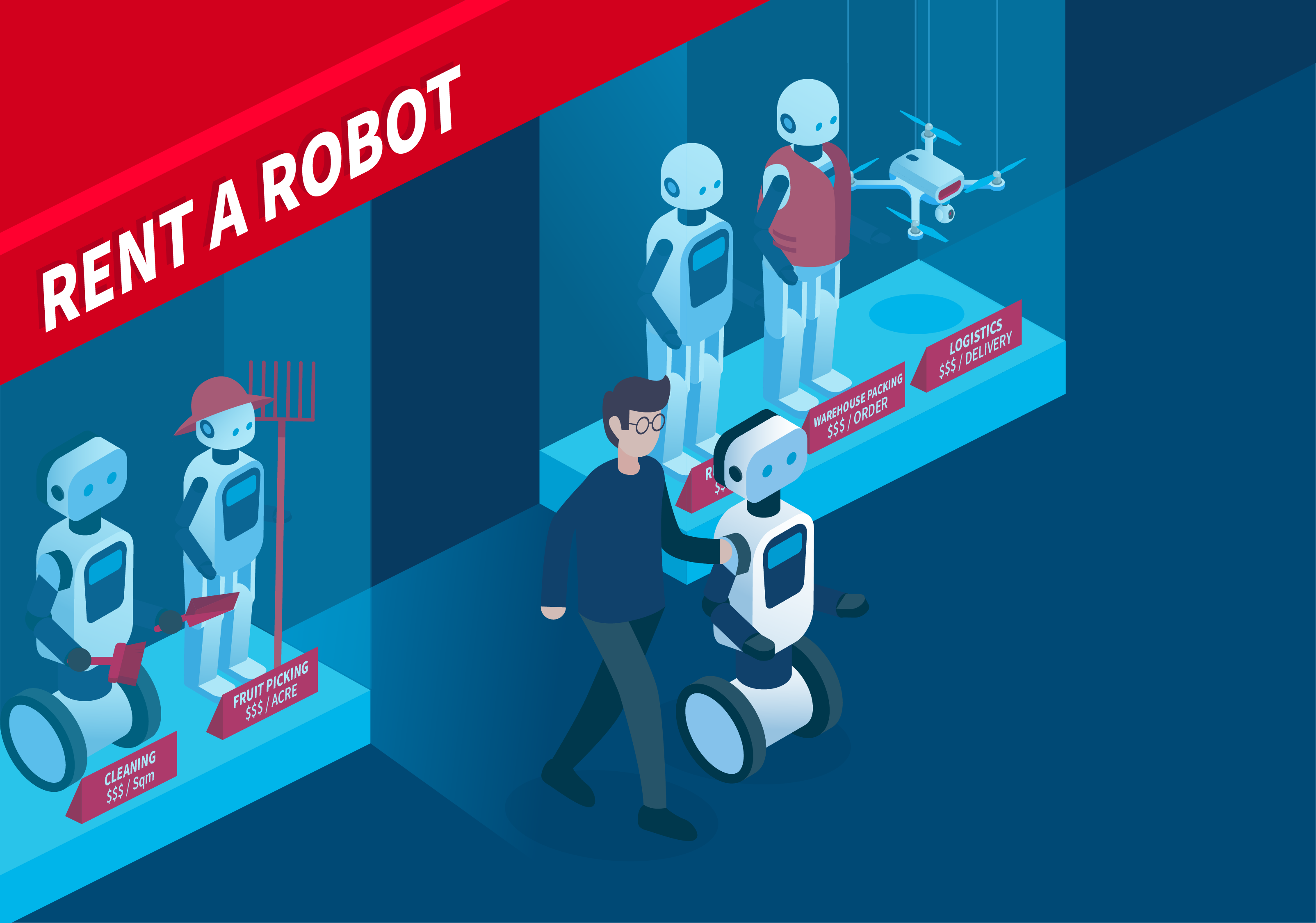Robots are coming to the rescue across many sectors helping to enforce or support social distancing, increasing warehouse capacity, or protecting humans by taking on roles made more hazardous by the coronavirus. What is perhaps more surprising is that more robots have not been deployed as workers are self-isolating or unable to fulfil their roles safely and effectively in their workplaces.

One big reason is cost. Currently, each robot is designed and deployed for a specific task and environment. Not only are the unit costs high (more than $125,000 each according to some reports) but the devices must be maintained, managed and in many cases, trained to understand the environment in which they are operating. All of which makes them a high-risk investment. The specific demands of the COVID-19 emergency have tilted the balance, and many suppliers have offered robots on generous terms to help mitigate the crisis, but long term, other approaches are needed.
Pay-as-you-go robots
An emerging approach is to offer Robots-as-a Service. Using the same model which has become popular for software and IT resources (software or infrastructure-as-a-service, SaaS and IaaS), Robots-as-a-Service, RaaS, transforms high capital expenditure into manageable operational budgets. Instead of paying high up-front costs, which could easily run into millions of dollars for even relatively basic deployments, customers opt for a regular monthly fee. They do not own the robots, but instead pay for the work output of the robot.
The advantages of this approach are not confined to the initial cost of the robot and its initial deployment. There are ongoing management, technical support and maintenance costs to be considered. Plus, many robots are used to help manage peaks in demand (or as now, specific crises) – but may not be ‘busy’ enough in normal times to justify their expense. The RaaS model can help here too as businesses pay for their usage rather than ownership of robots. When things are less busy, they can be re-deployed elsewhere.
These advantages can build a profitable line of business for a robotics company, as well as a cost effective and predictable operation budget for the customer. Suddenly, the cost of automating a facility is within reach of many.
Technology and financial barriers
But there are two problems that are holding back the RaaS market outside of today’s extraordinary situation. The first is technical, the second financial. SLAMcore is working to solve both.
On the technical front the problem lies in deploying robots across many different environments. Currently most autonomous mobile robots require adaptations to the physical environment to allow them to navigate. These often include tracks and labels that the robot ‘reads’ to locate itself or specific training on a new layout to build a map for it to use. Fully autonomous Simultaneous Localization and Mapping (SLAM) is only found in the most expensive and capable robots, developed by the largest companies with extensive AI and SLAM specialists. This means that it is hard for a RaaS business to deploy a robot across different environments, even when it is undertaking broadly the same task.
And this contributes to the second issue, financing. Although RaaS offers lower monthly costs to the end-customer, the RaaS provider still needs to pay to acquire, build or develop the robot in the first place. Small, innovative developers, who are at the cutting edge of robot design, cannot afford to buy everything up front and then offer a pay-as-you-go model. They are operating on shoestring budgets and need to sell robots to cover costs.
Changing the model
At SLAMcore we want to deliver a real and positive impact on society through our work. We want to help transform the industry to become more collaborative; sharing proven solutions rather than reinventing in silos, so that designers can focus on creating great solutions for specific applications. Our specialism is SLAM and spatial AI, and we believe we’ve developed the best SLAM software that can be simply integrated into any mobile robot. Our SDK, recently announced in Alpha, will give any developer the tools to test our algorithms with whatever sensors and processors they choose, and see how it can work in their robot designs.
We are also aware of the financial barriers. Although our approach saves time and money in development, it is still another cost to add to the overall project. So, we’ve adopted the RaaS model ourselves and will sell the SDK for a per-seat monthly fee for development, and a monthly per-robot fee for deployment. Developers large and small can easily test and integrate our solutions into their designs knowing that even as they go into production, they do not need to commit funds until their customers have contracted to deploy their robots.
SLAMcore is pioneering this approach and we hope that others will adopt it too. The RaaS model can rapidly grow the market for robots in many different applications and sectors. Adapting our business models to support it can only benefit the whole ecosystem.
🤖
Read more at blog.slamcore.com

.png)